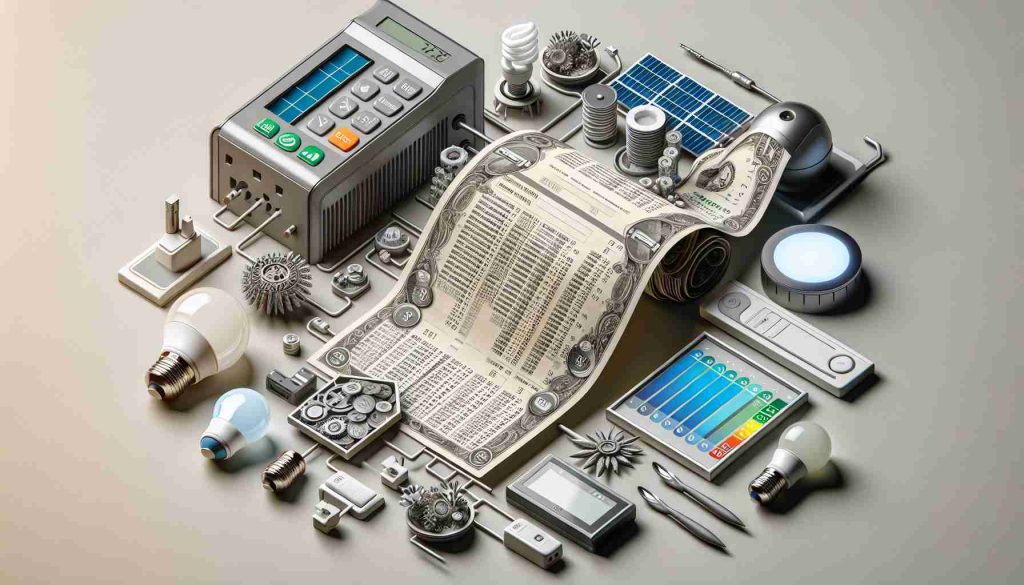As of today, energy prices have once again fluctuated, signaling a 9.11% decrease compared to the previous day. The current rate stands at 63.80 euros per megawatt-hour, prompting consumers to consider their energy consumption habits.
When is the most cost-effective time to utilize electricity?
Between 4:00 PM and 5:00 PM today, consumers can benefit from the lowest electricity rate of 40 euros per megawatt-hour. It is advisable to schedule high-energy-consuming tasks such as laundry or dishwashing during similar off-peak hours to optimize savings.
When should you be mindful of energy consumption?
During the peak hours of 8:00 PM to 9:00 PM tonight, the electricity cost peaks at 103.06 euros per megawatt-hour. It’s crucial to be cautious with energy-intensive appliances during this timeframe, especially when most individuals are at home post-work hours.
Hourly Breakdown of Electricity Prices on Friday, the 25th of October:
- 12:00 AM – 1:00 AM: 57 euros/MWh
- 3:00 AM – 4:00 AM: 44 euros/MWh
- 7:00 AM – 8:00 AM: 70.1 euros/MWh
- 10:00 AM – 11:00 AM: 70 euros/MWh
- 3:00 PM – 4:00 PM: 42 euros/MWh
- 6:00 PM – 7:00 PM: 56.5 euros/MWh
- 9:00 PM – 10:00 PM: 90.5 euros/MWh
By strategically managing your electricity usage, you can not only contribute to a more sustainable energy future but also potentially reduce your monthly electricity bills.
Additional Factors to Consider for Energy Efficiency and Monthly Savings
What are the long-term benefits of investing in energy-efficient appliances?
Investing in energy-efficient appliances can lead to significant long-term savings on your monthly energy bills. While the upfront cost may be higher, appliances with high energy efficiency ratings consume less electricity over time, resulting in lower utility bills.
Are there government incentives for improving energy efficiency in homes?
Yes, many governments offer incentives such as tax credits or rebates for homeowners who make energy-efficient upgrades to their homes. These incentives not only help offset the initial cost of upgrades but also encourage more sustainable energy consumption practices.
What impact does weatherization have on energy efficiency?
Weatherization plays a crucial role in improving energy efficiency in homes. Proper insulation, sealing air leaks, and installing energy-efficient windows can help reduce heating and cooling costs by maintaining a consistent indoor temperature, thus lowering energy consumption.
Key Challenges and Controversies:
One of the key challenges associated with energy efficiency is the initial cost of making upgrades or improvements. While energy-efficient appliances and home upgrades can lead to long-term savings, some households may find it financially challenging to invest in these upgrades upfront.
Another controversy in the energy efficiency sector revolves around the effectiveness of energy efficiency programs. Some critics argue that the savings claimed by energy efficiency measures are exaggerated or not as significant as advertised, raising questions about the true impact of these programs on reducing energy consumption.
Advantages and Disadvantages:
Advantages:
– Lower monthly energy bills
– Reduced environmental impact through lower energy consumption
– Potential for long-term cost savings
– Increased home comfort and energy efficiency
Disadvantages:
– Upfront costs of energy-efficient upgrades
– Variability in actual energy savings depending on usage habits
– Limited availability of government incentives in some regions
– Challenges in accurately quantifying the return on investment for energy efficiency measures
By carefully considering the long-term benefits, available incentives, and potential challenges associated with energy efficiency, homeowners can make informed decisions to optimize their energy usage and reduce monthly utility bills effectively.
For more information on improving energy efficiency and reducing monthly bills, visit Energy.gov.










More Stories
Game-Changer in Delivery! Glovo’s Bold Move Stuns Spain
Maximizing Returns Beyond Treasury Bonds
Exploring the Rising Trends in European Banking